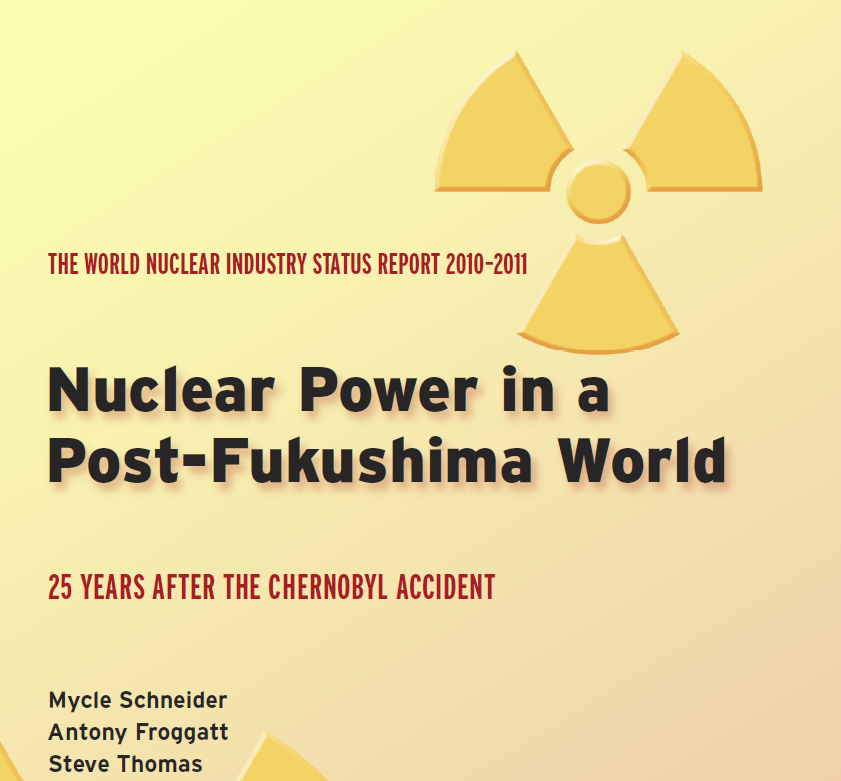 World Watch Institute’s Latest Report
World Watch Institute’s Latest Report
Authors – Mycle Schneider, Antony Froggatt and Steve Thomas
Executive Summary
Four weeks after the beginning of the nuclear crisis on Japan’s east coast, the situation at the country’s Fukushima Daiichi power plant remains far from stabilized. The damaged reactors continue to leak radioactivity, and although it is impossible to predict the overall impact of the disaster, the consequences for the international nuclear industry will be devastating.
The present World Nuclear Industry Status Report 2010–2011 was to be published at the occasion of the 25th anniversary of the Chernobyl disaster in Ukraine. The report provides the reader with the basic quantitative and qualitative facts about nuclear power plants in operation, under construction, and in planning phases throughout the world. It assesses the economic performance of past and current nuclear projects and compares their development to that of leading renewable energy sources. An extensive annex provides a country-by-country analysis of nuclear programs around the world.
The report also includes the first published overview of reactions to the catastrophe in Japan. But developments even prior to March 11, when the Fukushima crisis began, illustrate that the international nuclear industry has been unable to stop the slow decline of nuclear energy. Not enough new units are coming online, and the world’s reactor fleet is aging quickly. Moreover, it is now evident that nuclear power development cannot keep up with the pace of its renewable energy competitors.
Annual renewables capacity additions have been outpacing nuclear start-ups for 15 years. In the United States, the share of renewables in new capacity additions skyrocketed from 2 percent in 2004 to 55 percent in 2009, with no new nuclear coming on line. In 2010, for the first time, worldwide cumulated installed capacity of wind turbines (193 gigawattsa), biomass and waste-to-energy plants (65 GW), and solar power (43 GW) reached 381 GW, outpacing the installed nuclear capacity of 375 GW prior to the Fukushima disaster. Total investment in renewable energy technologies has been estimated at $243 billion in 2010.
As of April 1, 2011, there were 437 nuclear reactors operating in the world—seven fewer than in 2002. The International Atomic Energy Agency (IAEA) currently lists 64 reactors as “under construction” in 14 countries. By comparison, at the peak of the industry’s growth phase in 1979, there were 233 reactors being built concurrently. In 2008, for the first time since the beginning of the nuclear age, no new unit was started up, while two were added in 2009, five in 2010, and two in the first three months of 2011b. During the same time period, 11 reactors were shut down.
